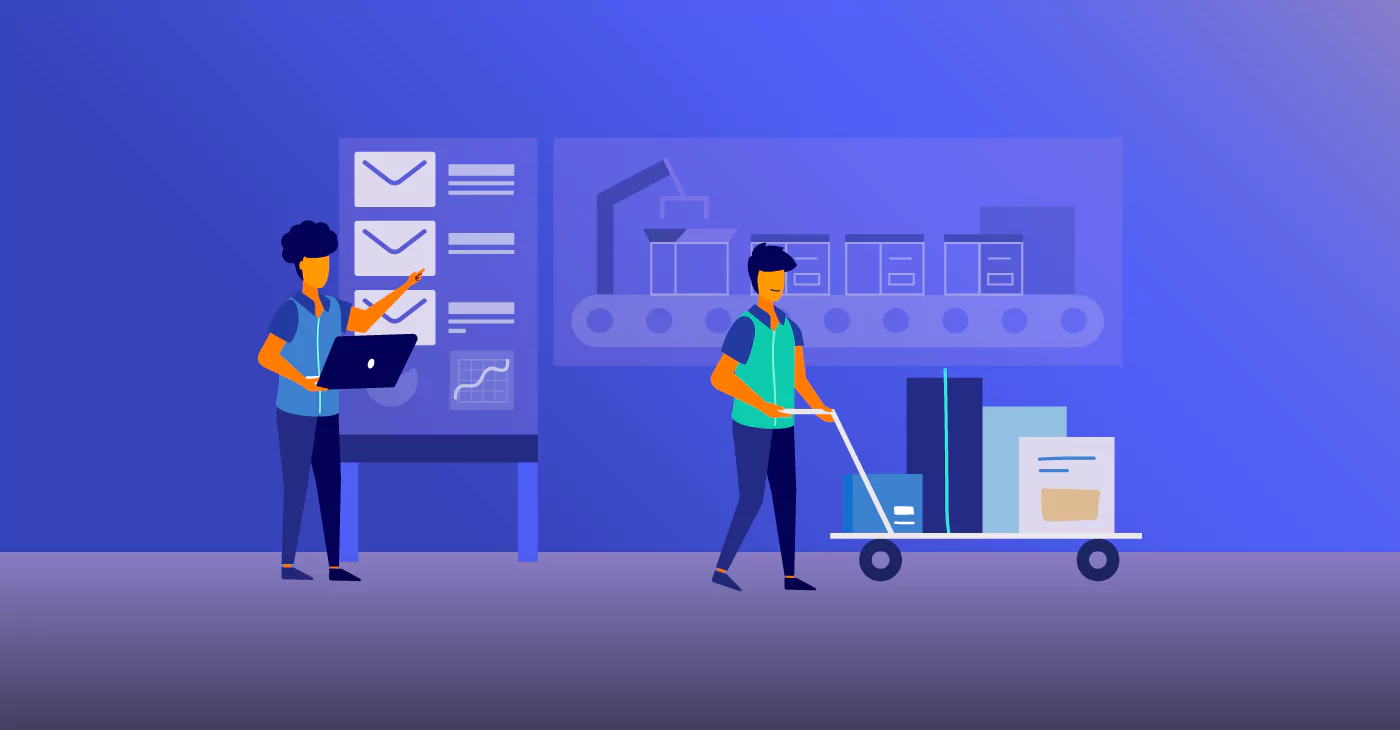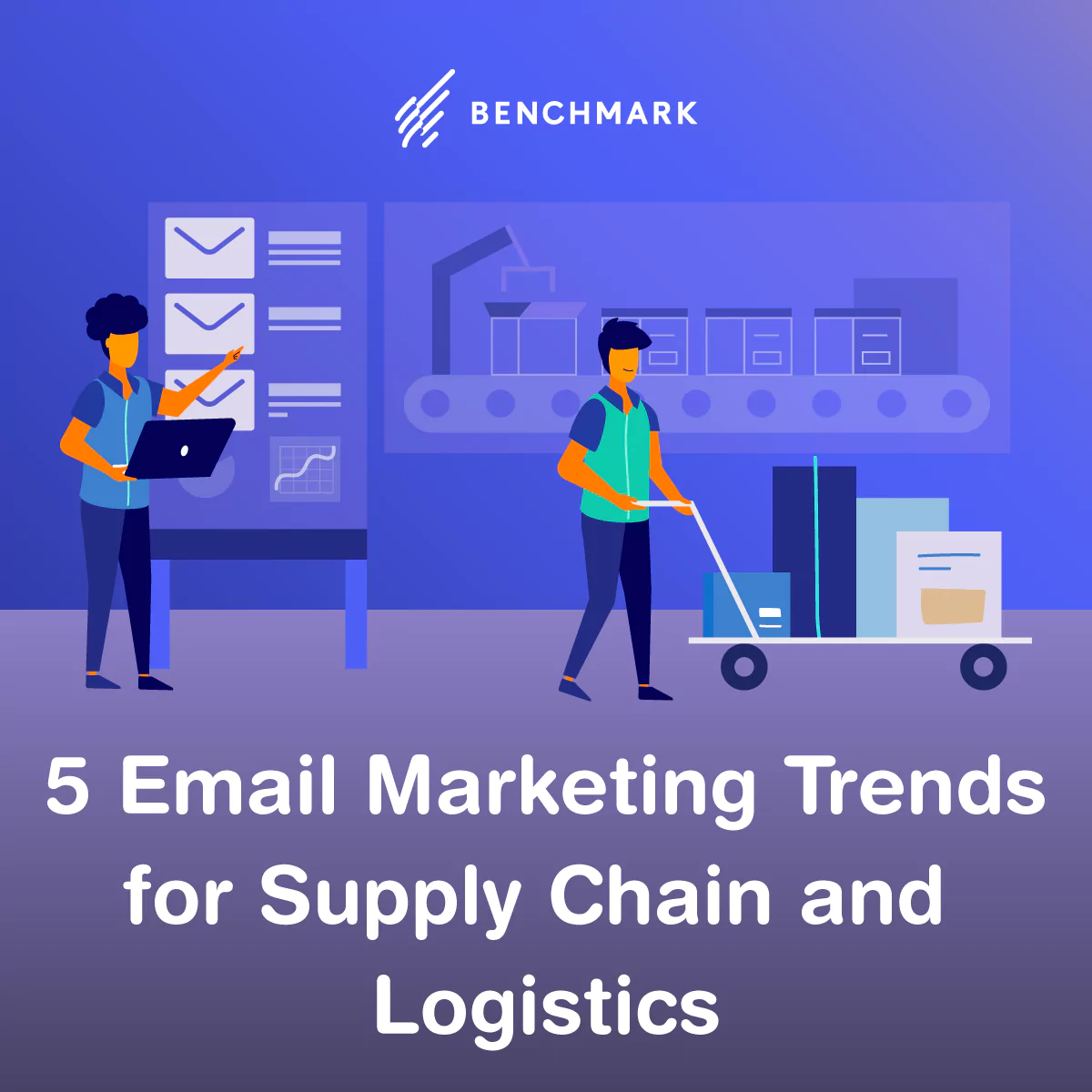5 Email Marketing Trends for Supply Chain and Logistics
November 24, 2020 6 min read

Email marketing may seem like an old-school tactic, but it plays a vital role in eCommerce. For example, sending three abandoned cart emails can lead to 69% more orders.
That stat alone solidifies email marketing as a mainstay. And while it may be here to stay, it does not remain stagnant. Email marketing is versatile and can be used across various industries, including supply chain and logistics.
But if you want to stay competitive in this space, you need to be abreast of the various trends happening within the eCommerce industry. Doing so will keep you one step ahead of the competition and ensure your tactics will resonate with your audience.
5 Email Marketing Trends You Need to Know
Long before social media, businesses relied on email to reach out and build relationships with their contacts. What was once a way to connect has transformed into an essential strategy for nurturing and converting new customers.
Consistent email strategies with a foundation on nurture and education are crucial, no matter what industry you’re in. Let’s dive into five email marketing trends that everyone within the supply chain and logistics industry needs to know (and use).
1. Segmented Email Lists
Do you know what makes email marketing successful? It’s the ability to personalize your emails, so they cater to the particular needs of the recipient. Segmenting your lists is at the root of personalization.
Your customers do not want to receive the same emails. Each customer has different preferences and is adding different products to his or her wish list. If you want your emails to really resonate with them, then you have to tap into their buying patterns and preferences and segment customers with similar patterns into the same lists. It’s the best way to make more accurate product recommendations, send helpful resources, and ultimately lead to more sales.
2. Interactive Emails
SendPulse defines an interactive email as any email with the functionalities necessary for recipients to take certain actions. These “functionalities” could be, for example, letting recipients proceed with their purchase, book a flight, or complete a survey.
Incorporating more interactive content into your emails makes them more engaging. They require your recipients to take immediate action. You’re keeping their attention and reducing the chance that they’ll exit without clicking on a link, downloading a guide, or performing whatever other steps you’re hoping they’ll take.
Incorporating more interactive content into your emails is actually pretty simple. You can start by adding image slides or videos or linking to a quiz or survey. Email marketing platforms allow you to embed multimedia content into your email templates, so if you’re using email automation software, you are already on your way.
3. Artificial Intelligence
It is undeniable that machine learning and AI will shape the future of many industries, including eCommerce.
For example, AI plays a big role in revolutionizing eCommerce fulfillment, allowing for an automated order fulfillment process. This includes warehousing, picking, packing, and shipping a product, reducing time and creating more efficiencies throughout the entire eCommerce process.
As for email marketing, AI allows you to implement smarter personalization. It analyzes customer behavior and generates data-driven insights so you can find ways to capitalize on your most valuable products. Knowing exactly what your customers want and prefer from your company can do wonders for your email marketing strategy. You can use this information to craft email messages more likely to encourage specific actions, ultimately leading to more trust from your audience and possibly more revenue.
4. Mobile Email Marketing
Nowadays, it is not enough that you have a well-crafted interactive email. It is also essential that it is optimized for mobile.
For one, mobile accounts for 46 percent of email opens. Plus, 35 percent of business professionals prefer to check their email on their mobile devices.
That said, it would be best to take the mobile-first approach when it comes to email marketing. This means creating an email for mobile devices first before adapting it to the big screen.
If you are in the supply chain and logistics, a mobile-first approach means making your subscription form mobile-friendly. Another thing is to create content with signup forms to boost your subscription.
5. Concise Email Copy
Since more and more people are reading email on their mobile devices, you need to keep your email copy concise.
The beauty of having a concise email copy is that it goes beyond mobile. Nowadays, wearable technologies, like smartwatches, allow users to read SMS and email on a small screen. So, by keeping your emails short and sweet, you’re also preparing for when wearable technologies boom in the future.
People are busy, and opening an email loaded with tons of copy will appear overwhelming to them. Most often, they won’t even read it, and worst-case scenario, they could unsubscribe from your emails altogether. Remember: less is more.
Why You Should Invest in Email Marketing
I hope we’ve proven that while email marketing has been around for quite some time, it’s still one of the most effective marketing strategies out there. But, in case you need some more convincing for using email for your logistics company, here are some reasons you can’t deny:
It Has a Personal Touch
Aside from face-to-face interaction, an email is the most personal contact you can have with your target audience. And in the case of supply chain and logistics, email correspondence is a great way to keep in touch, especially if your partners are abroad.
It’s Cost-effective
Eighty-one percent of small and mid-size businesses rely on email marketing for customer acquisition. There are billions of email users, which means it’s one of the best platforms for actually reaching potential customers. Also, you can reach out to people at any time and day of the week, as people are constantly checking their emails. With email, the window of opportunity is wide open.
It’s Measurable
The beauty of email marketing is that you do not have to guess whether your campaign is working or not. You can easily set and measure relevant key performance indicators and email metrics to see how well your campaigns are doing. Things like open rate, conversion rate, or website traffic driven from your emails are all indications of the success of your emails.
It’s Goal-oriented
Every good strategy has clear goals, and email marketing is no exception.
For instance, if you’re a manufacturer and supplier, your email marketing goal could be to acquire another eCommerce store owner as a client. When using a marketing automation tool paired with a CRM, you can clearly see your new subscribers’ job titles or industries. And, you can track the behavior of other prospects that are eCommerce store owners so you can use similar strategies to convert more.
Digital marketing is transforming how we do business, especially in the B2B space. It’s not surprising that the supply chain management and logistics industry would want to shift the way it implements email marketing if it means reaping more returns. If you pay attention to the trends mentioned above and incorporate them into your email marketing strategy, your supply chain and logistics company will become an industry leader in no time.
Author Bio
Jake Rheude is the director of business development and marketing for Red Stag Fulfillment, which operates order-fulfillment warehouses across the United States.







